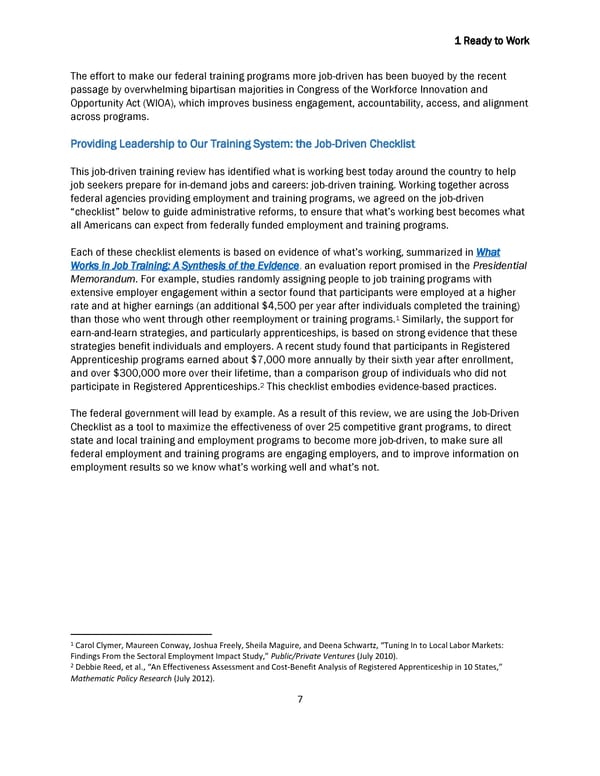1 Ready to Work The effort to make our federal training programs more job-driven has been buoyed by the recent passage by overwhelming bipartisan majorities in Congress of the Workforce Innovation and Opportunity Act (WIOA), which improves business engagement, accountability, access, and alignment across programs. Providing Leadership to Our Training System: the Job-Driven Checklist This job-driven training review has identified what is working best today around the country to help job seekers prepare for in-demand jobs and careers: job-driven training. Working together across federal agencies providing employment and training programs, we agreed on the job-driven “checklist” below to guide administrative reforms, to ensure that what’s working best becomes what all Americans can expect from federally funded employment and training programs. Each of these checklist elements is based on evidence of what’s working, summarized in What Works in Job Training: A Synthesis of the Evidence, an evaluation report promised in the Presidential Memorandum. For example, studies randomly assigning people to job training programs with extensive employer engagement within a sector found that participants were employed at a higher rate and at higher earnings (an additional $4,500 per year after individuals completed the training) 1 than those who went through other reemployment or training programs. Similarly, the support for earn-and-learn strategies, and particularly apprenticeships, is based on strong evidence that these strategies benefit individuals and employers. A recent study found that participants in Registered Apprenticeship programs earned about $7,000 more annually by their sixth year after enrollment, and over $300,000 more over their lifetime, than a comparison group of individuals who did not 2 participate in Registered Apprenticeships. This checklist embodies evidence-based practices. The federal government will lead by example. As a result of this review, we are using the Job-Driven Checklist as a tool to maximize the effectiveness of over 25 competitive grant programs, to direct state and local training and employment programs to become more job-driven, to make sure all federal employment and training programs are engaging employers, and to improve information on employment results so we know what’s working well and what’s not. 1 Carol Clymer, Maureen Conway, Joshua Freely, Sheila Maguire, and Deena Schwartz, “Tuning In to Local Labor Markets: Findings From the Sectoral Employment Impact Study,” Public/Private Ventures (July 2010). 2 Debbie Reed, et al., “An Effectiveness Assessment and Cost-Benefit Analysis of Registered Apprenticeship in 10 States,” Mathematic Policy Research (July 2012). 7
 Biden Ready to Work White Paper 7/22/14 Page 6 Page 8
Biden Ready to Work White Paper 7/22/14 Page 6 Page 8